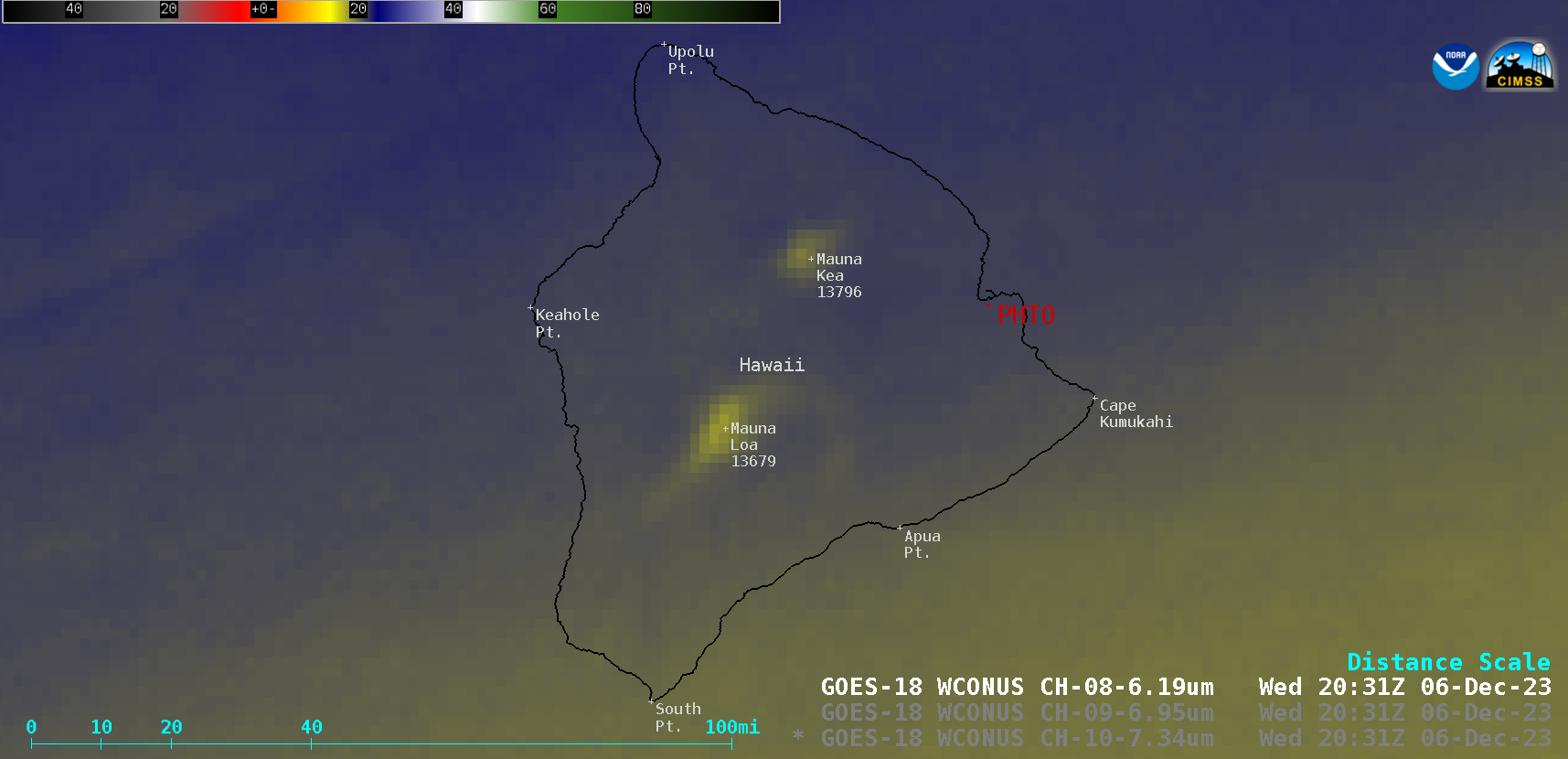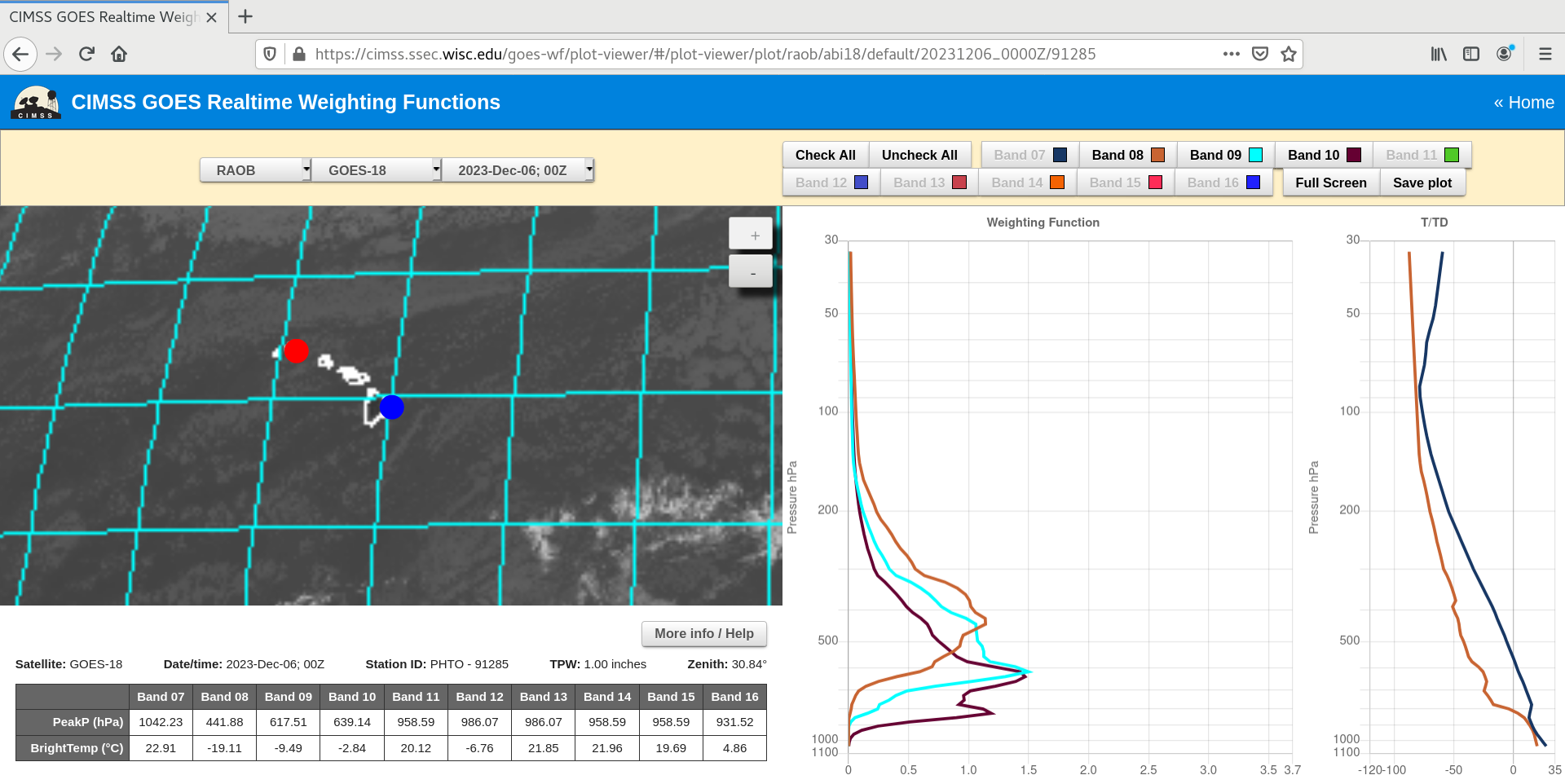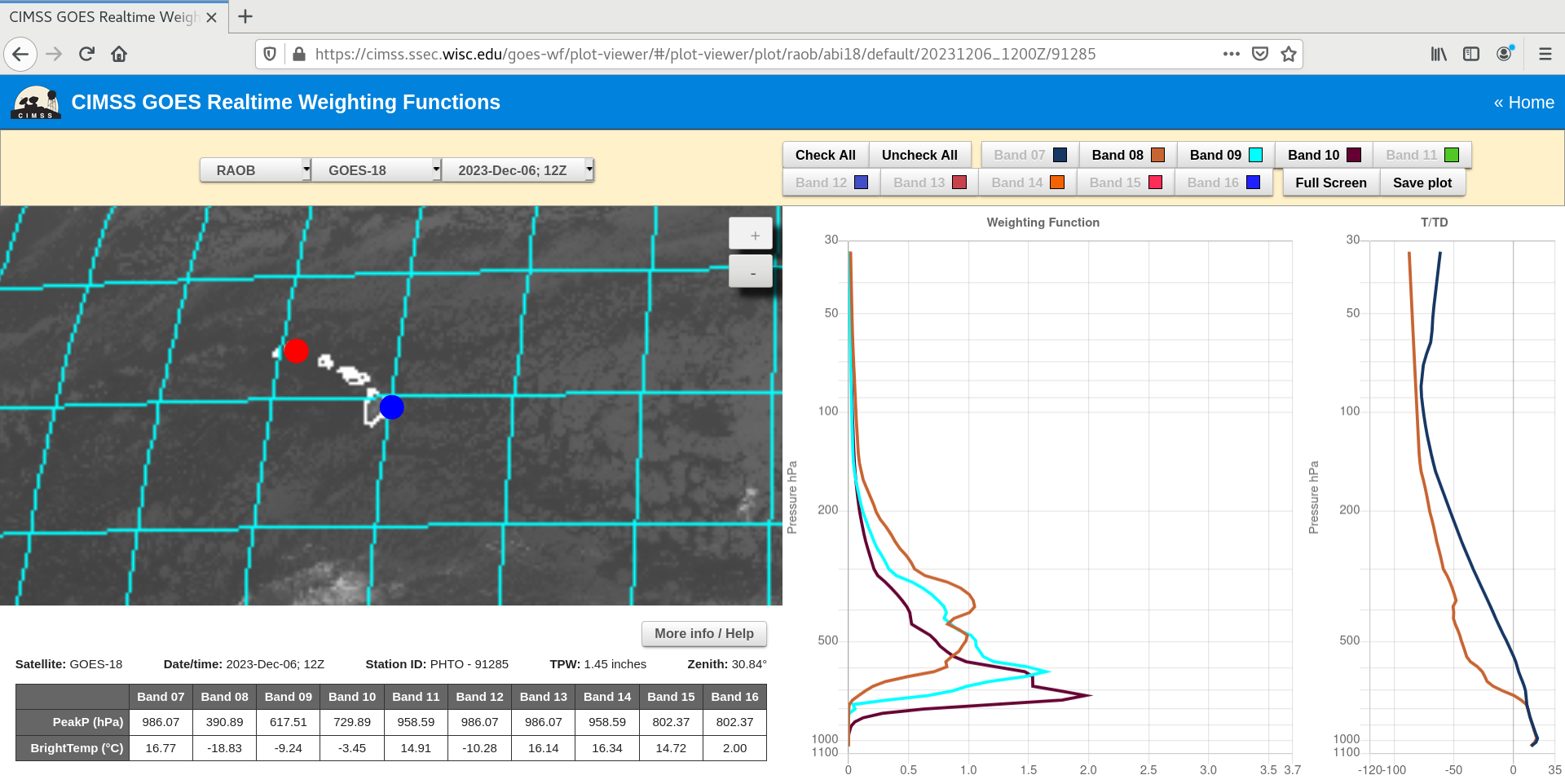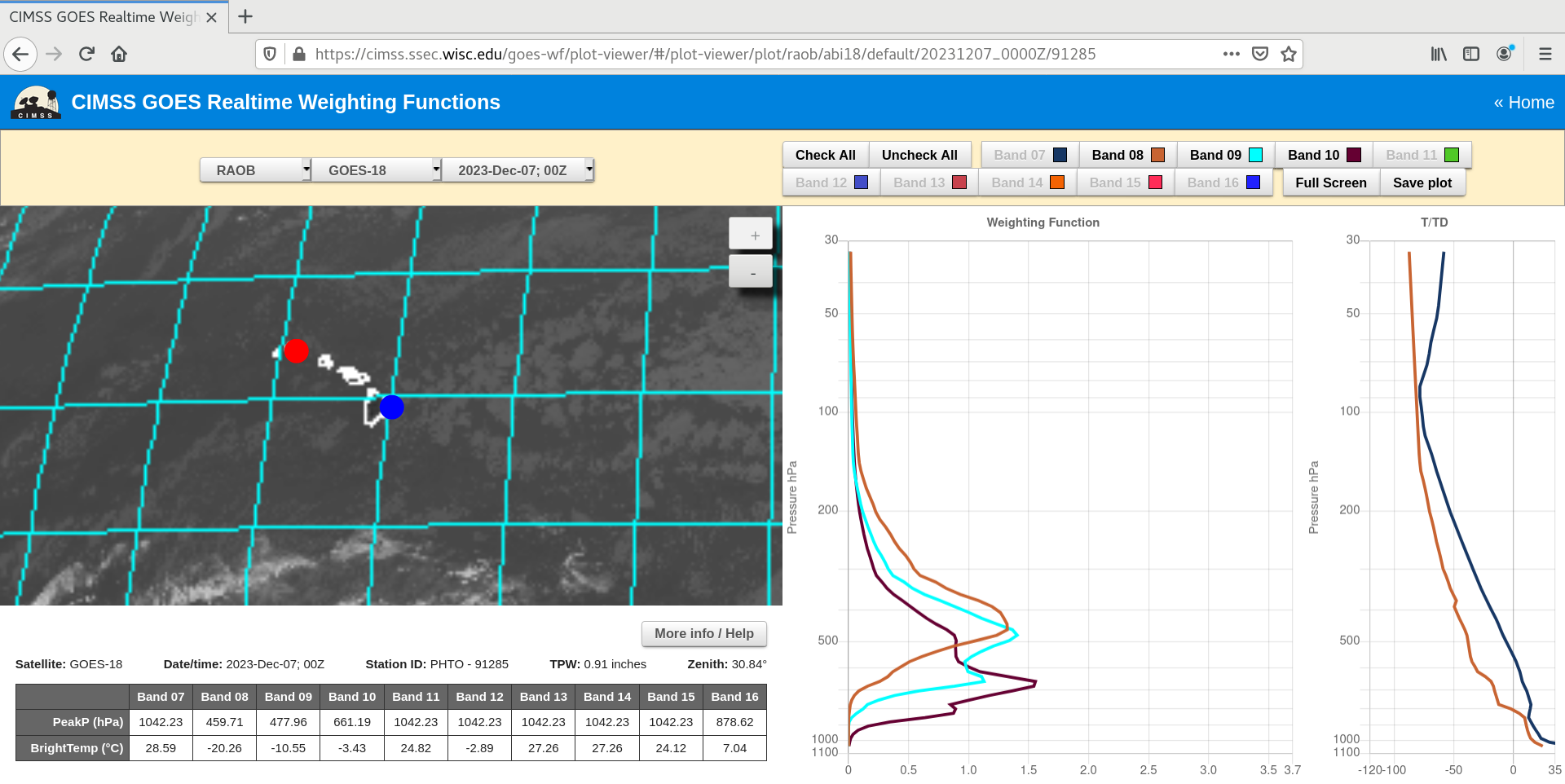Water Vapor imagery sensng the surface of Hawai`i

A sequence of 5-minute CONUS Sector GOES-18 (GOES-West) Lower-level Water Vapor (7.3 µm), Mid-level Water Vapor (6.9 µm), and Upper-level Water Vapor (6.2 µm) images (above) revealed the diurnal cycle of nighttime cooling and daytime warming at the summits of Mauna Kea and Mauna Loa on the Big Island of Hawai’i on 06 December 2023. This case is another example which helps to underscore the fact that Water Vapor spectral bands are essentially Infrared bands, which — in the absence of clouds, and in a dry atmosphere — can sometimes sense surface features.
The presence of very dry air within most of the middle/upper troposphere over Hawai’i on 06 December had the effect of shifting the water vapor weighting functions to lower altitudes, as seen on plots for the 3 ABI Water Vapor spectral bands calculated using rawinsonde data from Hilo PHTO (below). This allowed thermal radiation from the higher terrain of Mauna Kea and Mauna Loa to pass upward — with minimal attenuation — through what little high-altitude moisture was present, and reach the 7.3 µm / 6.9 µm / 6.2 µm detectors on the GOES-18 ABI instrument. The 2 mountain summits extend upward to near the 600 hPa pressure level — close to the level of peak weighting function contributions for Water Vapor spectral bands 09 and 10 — and to an altitude where there was still a contribution from the Band 08 weighting function, as calculated using the Hilo soundings.




